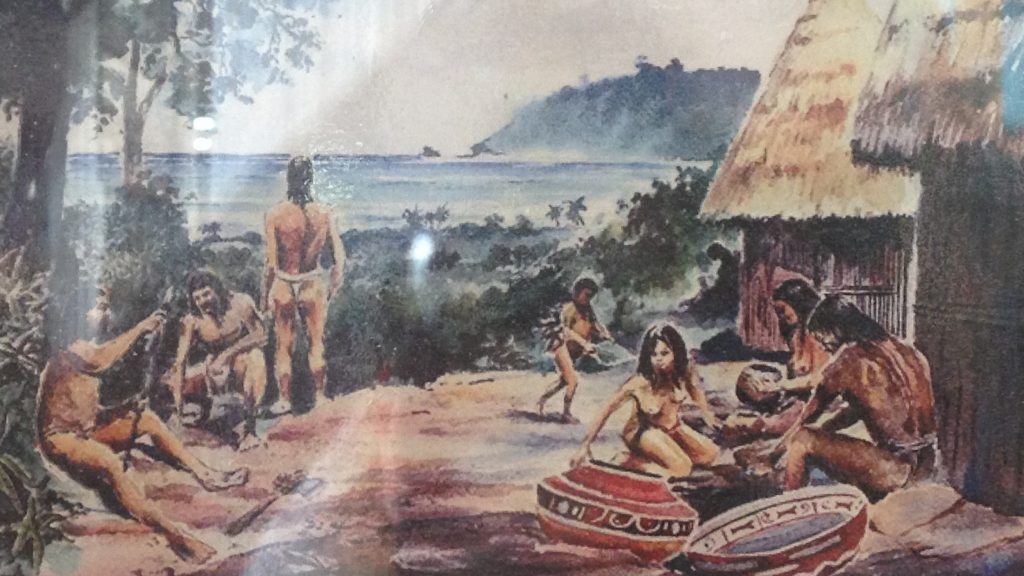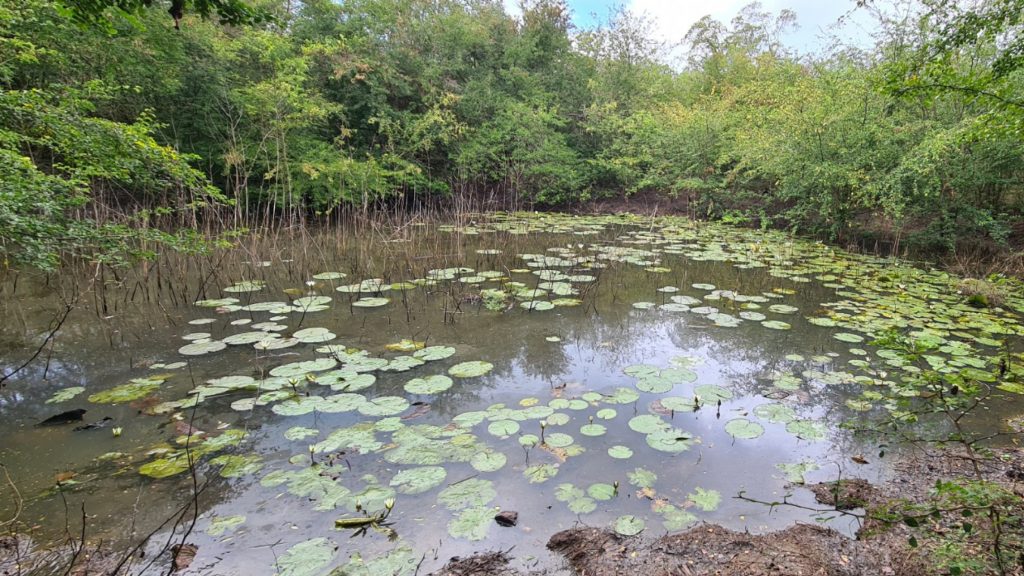
By Gemma Handy
Could remnants of an ancient settlement dating back several thousand years be lurking beneath the ground where developers are poised to create the country’s second special economic zone?
Archaeologist Dr Reginald Murphy has embarked on a study of the area which he says is abundant with colourful stories from the 17th and 18th century.
He now hopes to unlock more secrets from the country’s pre-colonial era and answer crucial questions about the intriguing people who called it home long before Columbus sailed past.
The area’s pristine, fertile landscape – which has never been thoroughly combed – makes it ripe for tantalising finds linked to Archaic Age and Ceramic Age communities, he tells Observer.

While concerns over the environmental impact of the vast 549-acre development between Jennings and Five Islands have triggered a vehement backlash, the site’s possible historical significance has to date received far less public attention.
One spot of particular interest to Dr Murphy is the patch of mangroves known as The Flashes, which teems with marine life.
“That would have been a huge attraction for the pre-Columbian people so I expect to find something in there,” he says.
“I expect to find an Archaic Age and a Ceramic Age settlement of substance,” he continues. “Based on the environment, the predictive modelling would suggest that when you have a healthy environment like that, with all these easy-to-harvest spaces for food like the mangroves, the turtlegrass, the near shore and offshore banks with shellfish, there are usually things to be found,” he explains.
“The fertile area has good clay for making ceramics, there are good stones for making tools, large trees – it’s the perfect environment for all sorts of settlements that would have been attractive to these people.”

What also makes The Flashes compelling to historians is the fact that a straight road once connected the area directly to Nonsuch Bay which is where the country’s biggest pre-Columbian sites can be found. Dr Murphy has a hunch it was created by people who lived here well before the early colonists.
Similar archaeological studies carried out prior to other major developments in Antigua – including the Jolly Beach Resort – have helped redefine what the world understands about the Caribbean’s esoteric past.
Much of the region’s history was written by colonists with their own agenda. Murphy’s work has often been focused on correcting those narratives.
“It’s the only way we can rebuild our history from our perspective – not what’s written in the history books by people who have never been here,” he explains.
Dr Murphy has already begun a “systematic study” which involves scrutinising old maps and historical accounts, followed by field surveys on foot.
He has foraged through some of the land adjacent to the development which is owned by a private family, and now plans to head into the area earmarked for construction.
“I’m appealing to the people who own the land that if they see me wandering around, I’m not looking to take anything, steal anything; I’m just doing an archaeological assessment survey of what could have been there in the pre-historic past,” Dr Murphy says.
Public outrage ensued after news of the development broke in October. Investors plan to build hotels, private homes, a financial district, warehouses, hospitals and universities, among other things.

A petition aimed at protecting Seaforth Beach and surrounding mangroves which fall within the development has now garnered almost 2,000 signatures. Campaigners fear for the future of the special area, long a popular haunt for hikers, fishers and campers, and home to rare and endemic wildlife.
Work was recently halted at the site to allow investors to provide more details and for government to stage a public consultation.
Many have decried the fact this was not done before land clearing began.
Dr Murphy says it’s crucial to also consider the artefacts which may be buried in the earth.
“I will be looking for evidence of human occupation. There could be absolutely nothing, or it could be washed away or bulldozed many years ago.
“But you don’t know unless you look,” he says.
Dr Murphy, who is also the country’s UNESCO representative, says such probes are carried out as standard in other parts of the world.
“This is something that’s done in all countries before any big development – except in Antigua for some bizarre reason.
“I spent two months in St Lucia doing this exact same thing. They want to develop a section of the island so they brought me in to do the survey first and we recovered what we could for their historical accounts,” he says.
“A heritage cultural impact assessment should be attached to all impact assessments, and especially for a development like this; you don’t want to be inadvertently destroying the country you’re trying to build up because these things add the quality to your development.
“The people who are going to live in these places would like to know what happened there, who lived there before them, so I don’t know why there’s always a reluctance to even think about it,” he adds.
In 2015, the Sunwing Travel Group signed an agreement with the government to develop the Royalton resort at Deep Bay.
Before work commenced, Dr Murphy was enlisted to scour the area, just as he had at Jolly Beach prior to that resort’s creation decades earlier.
The endeavours unearthed a wealth of artefacts dating as far back as 2,700 BC.
“Jolly Beach and Deep Bay changed what we know of the Caribbean’s history,” he continues.
Relics found were more closely connected to Central America and the Greater Antilles, rather than South America which is where the Arawak people, who arrived here later, are said to have originated from.
“These are the sort of things we have to look at, to really understand our history and see who was on these islands before we came here – what did they do, how did they survive?” the archaeologist continues.
An Archaic Age site at Jolly Beach turned up stone tools made of flint from Long Island, of a very distinctive style whereby large round cobbles were transformed into masterfully-crafted long knives.
“They didn’t make arrowheads here like you see in North America but these beautiful long knives made out of stone. And they also used different types of stone for grinding their food.
“Because North Americans were hunter-gatherers, they assumed these people were hunter-gatherers too, but, no, they had a very basic level of agriculture.
“Lots of grinding was taking place so we also find beautifully shaped bowls all made out of stone, not clay. So the questions are, what are they doing, what are they making at that early stage, what’s being ground, what kind of grain did they bring here?” he says.
The Arawaks are credited with introducing numerous crops to the Caribbean, including corn, cassava and tobacco.
“But these people had to have brought something too so we are pushing the origins of agriculture in the Eastern Caribbean back even further in time,” Dr Murphy says, adding, “The only way to answer these questions is to get out there and access these sites and salvage what we can quickly.”
